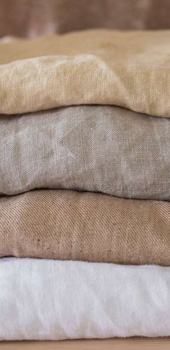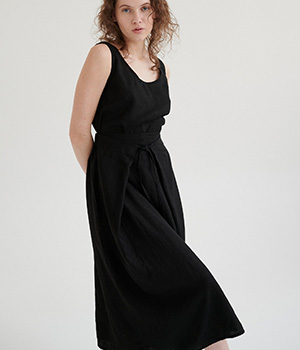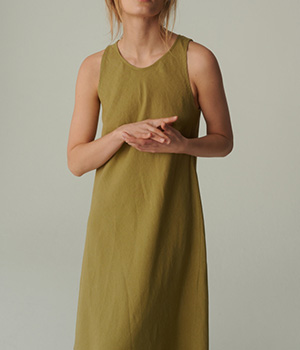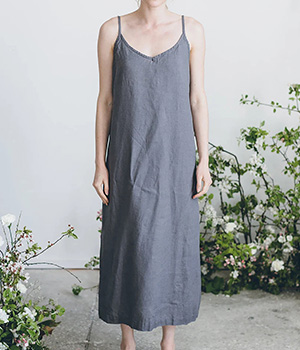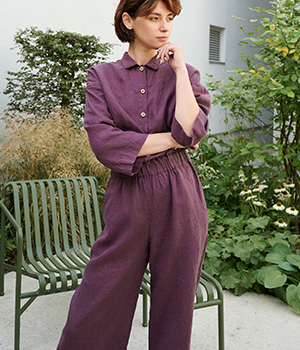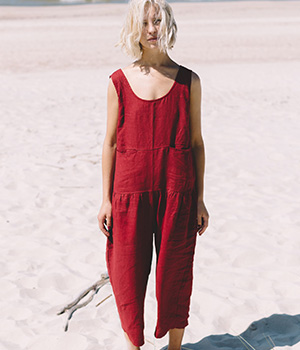Does linen keep you from sweating?
Introduction: Why Sweat Matters in Fashion
For fashion brands designing summer or resort collections, sweat is a design consideration, not just a personal issue. The demand for sustainable, breathable, and stylish garments is increasing among eco-conscious consumers. At the heart of this conversation lies one material: linen. But does linen actually help reduce the discomfort of sweating? Let’s explore.
1. The Nature of Linen: A Breathable Powerhouse
Linen, derived from the flax plant, has unique structural features that make it ideal for warm climates:
Breathability: The loose weave of linen allows air to circulate around the body.
Moisture absorption: Linen can absorb up to 20% of its weight in water before feeling damp.
Fast drying: Compared to cotton, linen releases moisture faster, enhancing comfort.
Cooling effect: Linen remains cool to the touch, even in high heat.
These attributes make linen one of the most sweat-compatible natural fabrics on the market.
🌿 Scientific Insight: Unlike synthetic fibers that trap heat and moisture, linen promotes airflow and reduces overheating.

2. Does Linen Stop Sweat? Not Exactly — But It Works With It
Let’s be clear: linen does not stop sweating. No fabric can do that. However, linen helps your body manage sweat more comfortably by:
Pulling moisture away from your skin
Allowing it to evaporate quickly
Staying light and airy even when damp
Preventing the “sticky” feeling common with synthetic fabrics
It’s a passive performance fabric — nature’s solution to heat and humidity.

3. Odor Control and Hygiene: Linen’s Hidden Strength
Sweat isn’t what causes body odor — bacteria is. Linen helps reduce odor build-up due to:
Faster drying (bacteria thrive in damp environments)
Natural antibacterial properties of flax fibers
The ability to wash less frequently while still smelling fresh
For fashion brands, this means lower environmental impact, longer-lasting garments, and satisfied customers.
💡 Sustainability Tip: Linen garments can last 2–3x longer than fast fashion cotton items — less waste, less odor, more value.
4. Which Linen Weaves Handle Sweat Best?
Different linen constructions affect how the fabric handles moisture and heat:

Plain weave linen remains the most effective for summer sweat management.

5. Linen vs Other Fabrics for Sweat Control
Here’s how linen stacks up against other popular fabrics:

🧵 Brand Insight: Linen is the rare fabric that’s both high-performance and low-impact — an ideal match for summerwear lines in eco-conscious markets.

6. Real-Life Case Studies: How Brands Use Linen to Beat the Heat
Case Study 1: European Workwear Brand
This menswear label sourced plain weave linen from Linenwind and saw a 45% rise in repeat purchases during summer — customers loved how dry and fresh they felt even after commuting.
Case Study 2: U.S. Travelwear Collection
A women’s wear startup launched a pre-washed linen travel set for Southeast Asia. The breathable set became their best-reviewed product for keeping cool in humid regions.
Case Study 3: High-Fashion Runway Designer
A luxury designer used heavyweight natural linen in a structured silhouette. Despite spotlights and heavy makeup, models reported cool comfort and reduced sweat under show conditions.
✨ Result: Linen isn’t just practical — it’s also adaptable for high design.
7. Sweat-Optimized Design Tips for Linen Clothing
To maximize the anti-sweat benefits of linen, we recommend these practices for fashion designers:
Fabric weight: Use 120–160 gsm for summer collections
Fit: Favor relaxed silhouettes to allow airflow
Construction: Avoid polyester linings; opt for breathable finishing
Color: Use light, natural tones to reflect heat and reduce stain visibility
Finishing: Enzyme-wash or stone-wash for added softness and wicking power

8. Educating Consumers = Stronger Brand Loyalty
Informing your customers about the sweat-controlling power of linen builds trust and transparency. Consider:
Adding performance tags to product packaging
Writing blog posts on “Why We Choose Linen”
Creating a QR code linking to care + performance instructions
Using sustainability icons that highlight benefits like moisture-wicking and low odor
📣 Marketing Tip: Products that solve real-life discomfort — like sweating — tend to convert better and retain loyal customers.
9. Frequently Asked Questions
Q: Is linen better than cotton for sweating?
Yes. Linen dries faster and is more breathable than cotton, which tends to retain sweat longer.
Q: Will sweat show through linen?
Linen dries fast and has a natural texture that minimizes the appearance of sweat patches — especially when using mid-tone or patterned designs.
Q: Can I use linen for activewear?
While not suitable for high-performance sports, linen is excellent for light activity, resortwear, yoga, and summer lounging.
Q: How should I care for linen in sweaty climates?
Cold wash, avoid fabric softeners, and air dry. Linen softens and performs better over time.
Conclusion: Yes — Linen Helps You Manage Sweat, Sustainably
While linen won’t stop you from sweating — it empowers your body to sweat smarter. It dries fast, breathes well, resists odor, and looks elegant while doing it.
For fashion brands seeking to deliver garments that are functional, sustainable, and comfortable under pressure, linen is not just an option — it’s a strategy.
💼 Final CTA
Want to create sweat-friendly linen collections for your brand?
👉 Contact Linenwind for OEM/ODM support, sustainable material sourcing, and full-cycle manufacturing tailored for summer comfort and performance.




